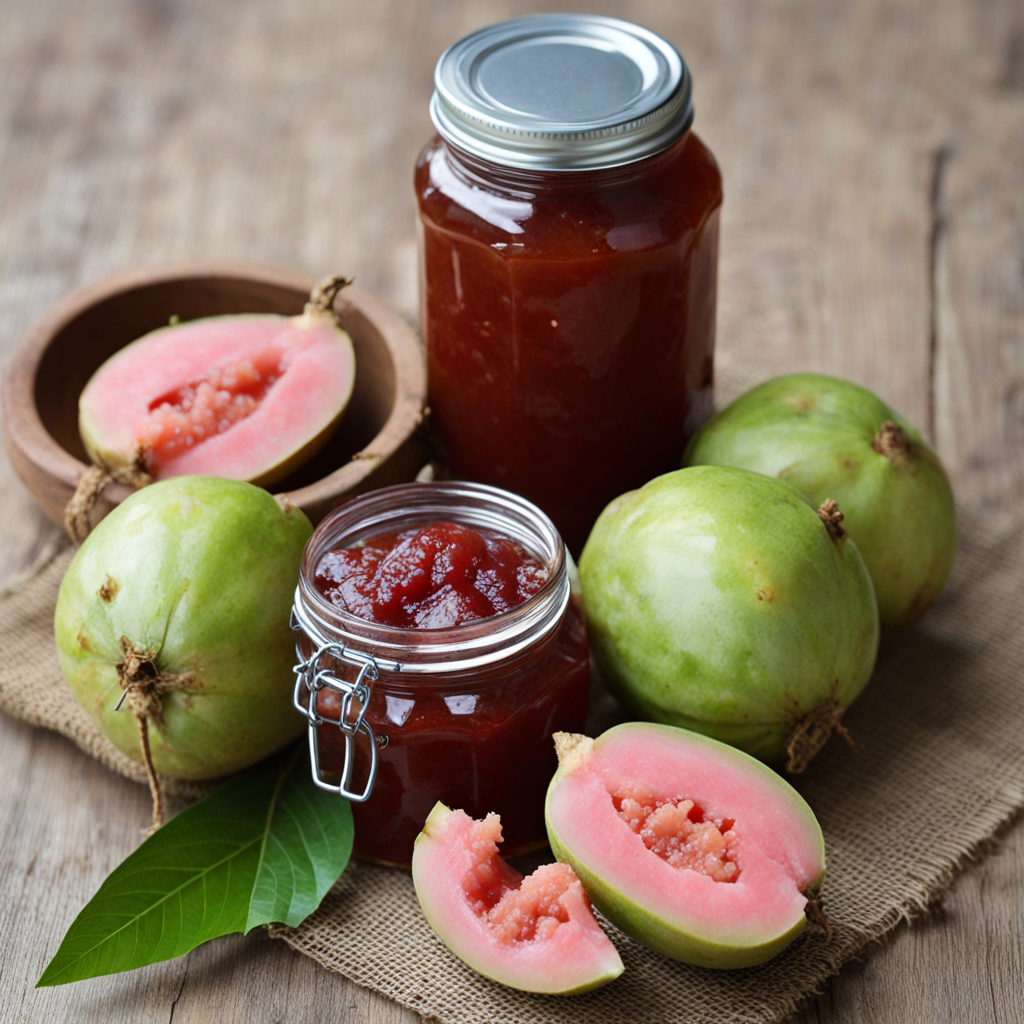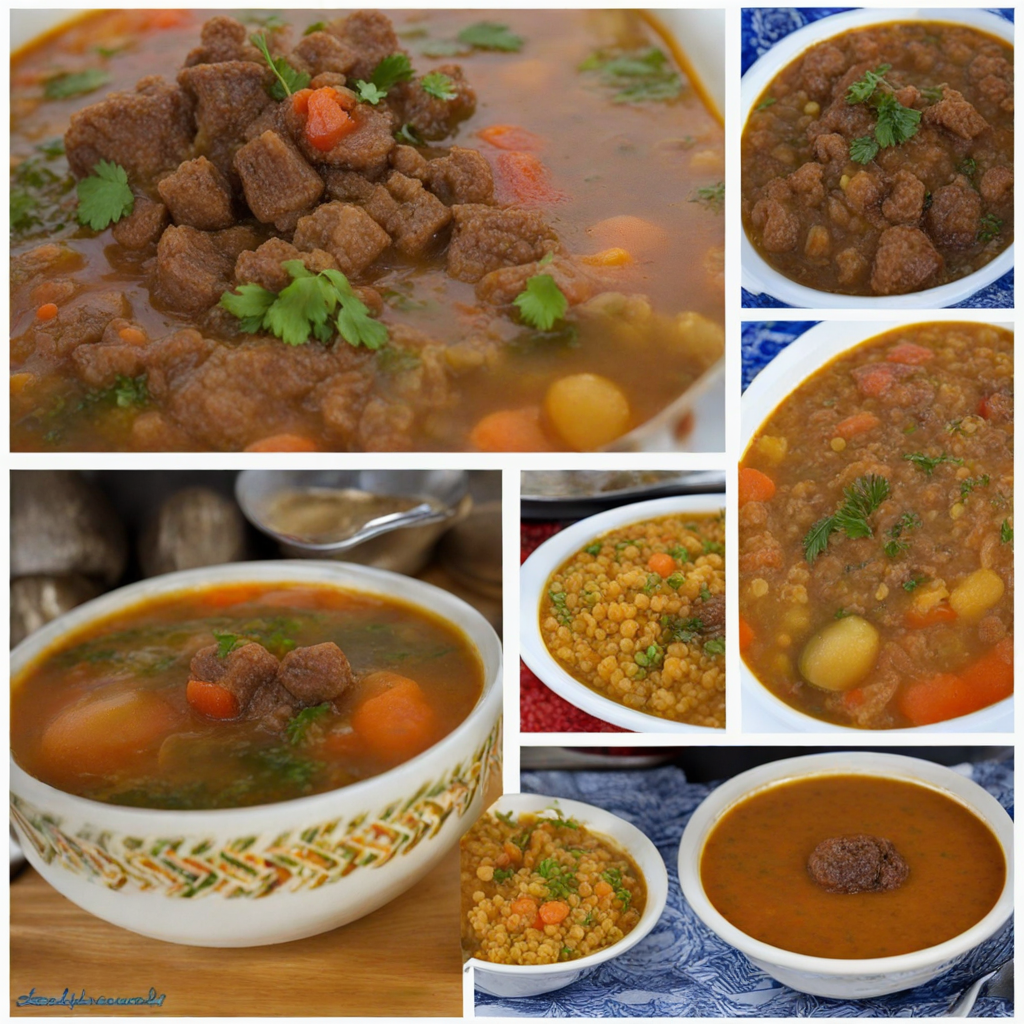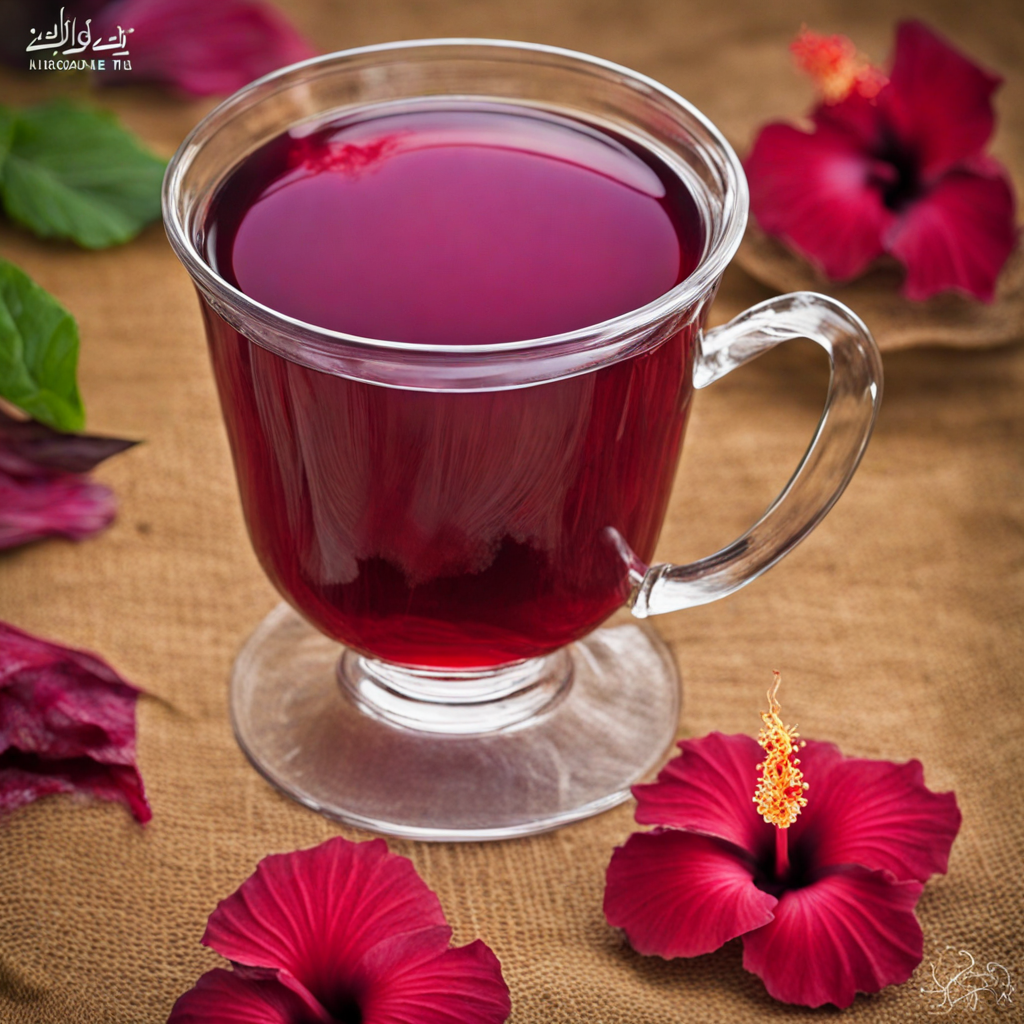Guava Jam
Guava Jam is a delightful spread originating from Sudan, showcasing the tropical fruit's unique flavor profile. The jam is made from ripe guavas, which are known for their sweet and aromatic qualities, often described as a blend of strawberry and pear. The vibrant pink or yellow color of the jam reflects the lushness of the fruit, inviting food lovers to indulge in its rich taste. The process of making Guava Jam involves cooking the guavas with sugar and a hint of lemon juice, which not only enhances the sweetness but also adds a zesty brightness that balances the flavors perfectly. The texture of Guava Jam is smooth yet slightly chunky, allowing for a satisfying mouthfeel that complements its sweet and tangy taste. Each spoonful bursts with the essence of fresh guava, which can evoke memories of sun-soaked afternoons in tropical gardens. This jam is incredibly versatile; it can be slathered on warm bread or toast, used as a filling for pastries, or even drizzled over desserts like ice cream and yogurt to elevate their flavor profiles. In Sudanese cuisine, Guava Jam is more than just a sweet treat; it is a staple that pairs beautifully with local cheeses and meats, making it an essential element in many traditional dishes. The jam can also serve as a base for sauces and marinades, infusing dishes with its distinct taste. For those looking to explore new culinary horizons, Guava Jam offers a delightful way to experience the sweetness of Sudan’s vibrant fruit culture.
How It Became This Dish
The Sweet Symphony of مربى الجوافة: A Culinary Journey Through Sudan #### Origins of مربى الجوافة مربى الجوافة, or guava jam, is a beloved sweet spread in Sudan, where the guava tree (Psidium guajava) flourishes in the warm, tropical climate. Guava, native to Central America and the Caribbean, made its way to Africa during the colonial era, quickly adapting to various climates and becoming an integral part of local agriculture in several regions, including Sudan. The fruit itself is not just a delicious snack but also a potent symbol of resilience and adaptability. Guavas were introduced to Sudan during the early 20th century, when agricultural practices were evolving due to colonial influences and the introduction of new crops. Over time, Sudanese farmers recognized the guava's potential, planting it widely. The fruit is known for its aromatic flavor and nutritional benefits, rich in vitamin C, fiber, and antioxidants. Thus, it became a staple in Sudanese households, providing both sustenance and a connection to the land. #### Cultural Significance In Sudan, مربى الجوافة is more than just a sweet treat; it is a cultural artifact. Traditionally, it is prepared during the guava season, which generally occurs from late summer to early autumn. The process of making guava jam is often a communal activity, involving families and neighbors who come together to preserve the bountiful harvest. This practice not only strengthens community ties but also passes down culinary traditions from generation to generation. The jam is often enjoyed during breakfast, spread on freshly baked flatbreads or served alongside traditional Sudanese tea. It also finds its place in festive gatherings and celebrations, symbolizing hospitality and the abundance of the harvest. During Eid celebrations and weddings, مربى الجوافة is frequently featured as part of the spread, representing sweetness in life and joy in communal bonds. Moreover, guava jam has transcended its role as a mere food item; it has become a symbol of Sudanese ingenuity and resourcefulness. In a country where food preservation techniques are essential due to fluctuating climates and economic challenges, مربى الجوافة represents the use of local resources to combat food scarcity and ensure nutritional diversity. #### Development Over Time The evolution of مربى الجوافة is a reflection of broader changes in Sudanese society and culinary practices. In the early days, the jam was often made in simple household kitchens using traditional methods. The fruit would be cooked down with sugar and sometimes flavored with spices like cardamom or cinnamon, recipes passed down through families. These early versions were unrefined, focusing on the natural flavor of the guava and the simplicity of the ingredients. As Sudan faced various socio-economic changes throughout the 20th century, including periods of conflict and displacement, food preservation became even more critical. The art of making مربى الجوافة adapted to the challenges of modern life, with families looking for sustainable ways to store food. The jam became a means of preserving not just the guava fruit but also the memories of home and heritage, especially for those who had been displaced. With the advent of globalization in the late 20th century, Sudanese cuisine began to interact more with international culinary trends. The introduction of new technologies and methods of food production led to the commercialization of مربى الجوافة. Local businesses began to produce guava jam on a larger scale, introducing variations that catered to both local and international markets. Some brands experimented with tropical flavors, infusing the jam with other fruits or exotic spices, while others focused on organic production methods to appeal to health-conscious consumers. Despite these changes, traditional recipes remain cherished, often shared among families and communities. The traditional methods of preparation, such as slow cooking and the use of minimal preservatives, are still celebrated, and many households prefer homemade versions to store-bought ones. This duality of tradition and modernity is a hallmark of Sudanese culinary identity. #### Contemporary Relevance Today, مربى الجوافة stands as a testament to Sudan's rich agricultural heritage and the resilience of its people. With a growing interest in local and sustainable food practices, the jam has found a place in contemporary culinary discourse both in Sudan and abroad. Chefs and food enthusiasts are increasingly exploring traditional Sudanese recipes, reimagining them for modern palates while preserving their cultural essence. In recent years, there has been a resurgence of interest in traditional Sudanese foods, with many young Sudanese chefs taking pride in their culinary heritage. They are not only reviving recipes for مربى الجوافة but also experimenting with its use in innovative ways, such as in desserts, sauces, and even savory dishes, showcasing its versatility. This renaissance reflects a broader appreciation for heritage cuisines and the importance of preserving cultural identities through food. Moreover, with the rise of social media, the global food community has begun to notice Sudanese culinary traditions. Platforms like Instagram and food blogs have amplified the visibility of مربى الجوافة, allowing food lovers worldwide to discover this delightful preserve. This newfound attention has not only boosted the popularity of the jam but also sparked conversations about the importance of preserving traditional foodways and recognizing their cultural significance. #### Conclusion مربى الجوافة is more than just a sweet jam; it embodies the spirit of Sudan. It tells a story of resilience, community, and tradition, reflecting the evolving nature of Sudanese food culture. As it moves into the future, the guava jam continues to connect generations, serving as a delicious reminder of the past while embracing the innovations of the present. Its journey from humble beginnings to a cherished delicacy demonstrates the power of food as a medium for storytelling and the preservation of cultural identity. Whether enjoyed as a simple breakfast spread or as part of a grand feast, مربى الجوافة remains a beloved symbol of Sudanese heritage, sweetening the lives of those who savor it.
You may like
Discover local flavors from Sudan







